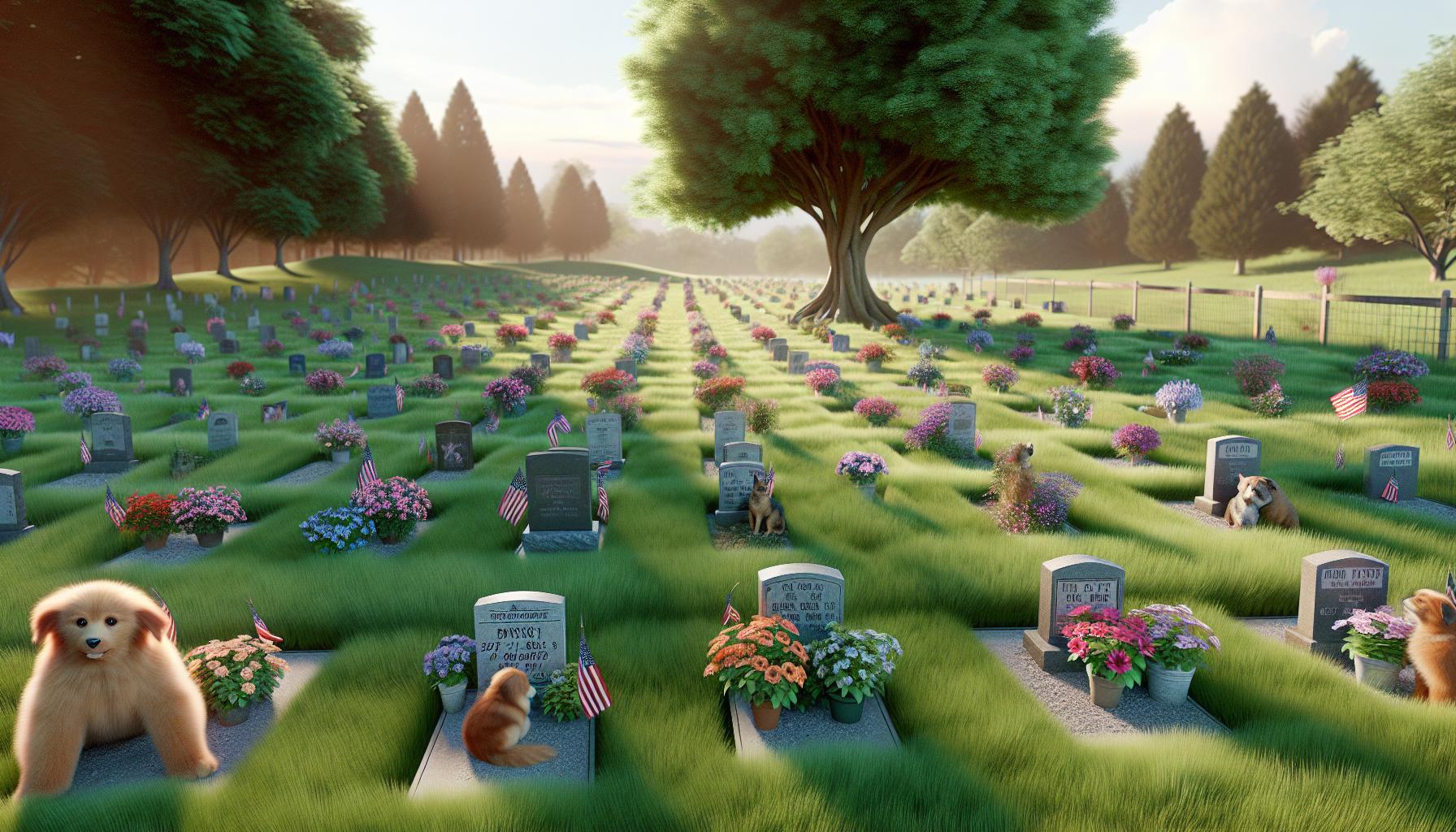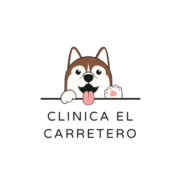Losing a beloved pet leaves an irreplaceable void in our hearts. As someone who’s helped countless pet owners through this difficult journey, I understand the overwhelming emotions and uncertainty that come with saying goodbye to a furry family member. When faced with the loss of a pet, knowing how to handle their remains with dignity and respect becomes crucial. Whether you’re considering burial, cremation, or memorial services, I’ll guide you through the available options to help honor your companion’s memory in a meaningful way. Making these decisions isn’t easy, but understanding your choices can provide comfort during this emotional time.
- Pet loss triggers significant grief symptoms in 85% of pet owners, with emotional impacts comparable to losing a human family member
- Three main options for deceased pet care include home burial (where legally permitted), cremation services (private, partitioned, or communal), and pet cemeteries
- Documentation requirements for pet aftercare include death certificates, ownership records, and necessary permits for transportation or burial
- Creating meaningful memorials through memory books, photo collections, and memorial services helps process grief while honoring your pet’s memory
- Children need age-appropriate support and explanations when dealing with pet loss, with different approaches for ages 2-5, 6-9, and 10-12
- Surviving pets may experience behavioral changes after losing a companion, typically requiring 8-12 weeks for complete adjustment
Deceased Pet Care
Pet loss creates profound emotional impacts comparable to losing a family member. Research from the American Veterinary Medical Association indicates 85% of pet owners experience significant grief symptoms after their pet’s death.
Stages of Pet Loss Grief
The grief journey following pet loss typically progresses through five distinct stages:
- Denial: Experiencing disbelief about the pet’s death
- Anger: Feeling frustrated at circumstances veterinarians or oneself
- Bargaining: Wondering about different choices or outcomes
- Depression: Experiencing deep sadness withdrawal from daily activities
- Acceptance: Finding peace while preserving memories
The duration of each stage varies for different individuals, lasting between 6-12 months for complete processing.
- Intense sadness: Crying spells tearfulness persistent melancholy
- Guilt: Second-guessing medical decisions or care choices
- Loneliness: Missing daily routines physical presence companionship
- Anxiety: Changes in sleep patterns appetite concentration
- Relief: Mixed feelings after a long illness or difficult end-of-life period
| Grief Response | Percentage of Pet Owners | Average Duration |
|---|---|---|
| Severe Grief | 35% | 2-3 months |
| Moderate Grief | 45% | 1-2 months |
| Mild Grief | 20% | 2-4 weeks |
Options for Deceased Pet Care

Pet owners have several dignified options for handling their deceased pet’s remains. Each option provides unique ways to memorialize a beloved companion while complying with local regulations.
Home Burial Considerations
Home burial offers a personal connection to a pet’s final resting place in familiar surroundings. Local zoning laws determine if home burial is permitted, with specific requirements for burial depth (typically 3-4 feet) and distance from water sources (minimum 100 feet). The burial location requires marking with sturdy materials to prevent future disturbance. Pets wrapped in biodegradable shrouds or placed in eco-friendly caskets decompose naturally.
Pet Cremation Services
Pet cremation services provide three primary options: private, partitioned or communal cremation. Private cremation ensures the return of only your pet’s ashes in an urn or keepsake container. Partitioned cremation separates pets during the process using dividers. Communal cremation involves multiple pets cremated together, with no return of ashes. Professional cremation facilities charge $50-300 based on pet size and service type.
Pet Cemeteries and Memorial Parks
Licensed pet cemeteries offer perpetual care and maintained grounds for deceased pets. These facilities provide burial plots ($500-1500), headstones ($200-1000) and memorial services. Many pet cemeteries include gardens, walking paths and gathering spaces for remembrance visits. Some facilities offer above-ground options like columbarium niches for cremated remains. Dedicated staff maintain the grounds year-round, ensuring a peaceful final resting place.
| Cremation Type | Cost Range | Return of Ashes |
|---|---|---|
| Private | $175-300 | Yes |
| Partitioned | $100-175 | Partial |
| Communal | $50-100 | No |
Preparing for Your Pet’s Final Arrangements

Making arrangements for a deceased pet requires careful planning and documentation. Here’s a comprehensive guide to help navigate the essential requirements and financial aspects.
Documentation Requirements
Several documents are vital for proper pet aftercare processing:
- Death certificate signed by a licensed veterinarian
- Pet ownership records including microchip registration
- Authorization forms for cremation or burial services
- Transportation permits for moving deceased pets across state lines
- Municipal permits for home burial (if applicable)
- Written consent for specific memorial services or procedures
Cost Considerations
Pet aftercare services vary in price based on selected options:
| Service Type | Average Cost Range | Additional Fees |
|---|---|---|
| Private Cremation | $175-$350 | Urn ($50-$200) |
| Communal Cremation | $75-$125 | None |
| Pet Cemetery Plot | $400-$900 | Headstone ($150-$400) |
| Home Burial | $20-$50 | Marker ($25-$100) |
| Memorial Service | $100-$300 | Keepsakes ($25-$150) |
- Transportation fees for pick-up services
- Special handling requirements for large pets
- Memorial product selections (urns, caskets, markers)
- Viewing or farewell ceremony charges
- Rush processing fees for expedited services
- Return delivery costs for cremated remains
Creating Meaningful Memorial Tributes

Memorial tributes preserve cherished memories of deceased pets through tangible keepsakes and meaningful ceremonies. These personalized remembrances help process grief while celebrating a pet’s life and impact.
Memory Books and Photo Collections
Memory books capture the essence of a pet’s life through organized collections of photographs, stories and mementos. Digital platforms like Shutterfly and Snapfish offer customizable photo books with layouts specifically designed for pet memorials. Key elements to include:
- Select 20-30 high-quality photos showing different life stages
- Write detailed captions with dates, locations and memorable moments
- Include physical mementos like collar tags, paw prints or fur clippings
- Document favorite activities, quirks and personality traits
- Add meaningful quotes about pets and companionship
- Create chronological sections highlighting milestones
- Choose a significant location like a backyard garden or favorite park
- Invite 5-10 close friends and family members who knew the pet
- Display photos, toys and other meaningful items
- Share prepared stories and invite attendees to contribute memories
- Include symbolic activities like planting a tree or releasing butterflies
- Light candles or lanterns in remembrance
- Create a memorial stone or plaque for the gathering space
- Play music that represents happy times with the pet
| Memorial Service Elements | Average Cost Range |
|---|---|
| Photo Memory Book | $35-75 |
| Memorial Stone/Plaque | $50-150 |
| Memorial Tree/Plant | $25-100 |
| Memorial Jewelry | $30-200 |
| Professional Photography | $150-300 |
Helping Children Cope with Pet Loss
Children experience pet loss differently from adults and require specialized support to process their grief. Understanding age-appropriate approaches helps children navigate this emotional journey effectively.
Age-Appropriate Conversations
Communication strategies for children vary based on developmental stages:
- Ages 2-5
- Use simple, concrete terms to explain death
- Avoid phrases like “put to sleep” or “passed away”
- Focus on basic facts about the pet not coming back
- Address immediate concerns about daily routines
- Ages 6-9
- Provide more detailed explanations about death
- Answer questions about biological processes honestly
- Acknowledge their emotions openly
- Share personal pet loss experiences
- Ages 10-12
- Discuss death as a natural life process
- Encourage questions about mortality
- Validate complex emotions
- Include them in memorial decisions
- Creative Expression
- Drawing pictures of happy memories
- Creating a memory box with pet items
- Writing stories about their pet
- Crafting a memorial photo album
- Physical Activities
- Planting a memorial garden
- Building a remembrance stone
- Creating paw print art
- Designing a memory frame
- Emotional Support
- Reading pet loss books together
- Joining pet loss support groups
- Maintaining daily routines
- Participating in memorial ceremonies
| Age Group | Processing Time | Recommended Support Duration |
|---|---|---|
| Ages 2-5 | 2-4 weeks | 1-2 months |
| Ages 6-9 | 4-8 weeks | 2-3 months |
| Ages 10-12 | 6-12 weeks | 3-4 months |
Supporting Other Pets in the Household
Pets experience grief when losing a companion animal just like humans. According to veterinary behavioral studies, 65% of pets exhibit noticeable behavioral changes after losing a household companion.
Behavioral Changes to Expect
Surviving pets display distinct signs of mourning through behavioral modifications:
- Searching continuously for the deceased pet in familiar locations
- Decreased appetite lasting 3-7 days
- Increased vocalization through whining, barking or meowing
- Changed sleeping patterns with 2-3 additional hours of rest
- Clinginess to pet owners with constant following behavior
- Lethargy during regular play or exercise times
- Restlessness at feeding times or bedtime routines
- House soiling incidents from anxiety or stress
- Maintain consistent daily routines for feeding, walks, and playtime
- Add 15-20 minutes of extra attention through petting or grooming
- Create new positive associations in spaces previously shared
- Introduce enrichment activities like puzzle toys or treat-dispensing games
- Monitor food intake, ensuring meals aren’t skipped for over 24 hours
- Place familiar items near sleeping areas for comfort
- Keep exercise sessions regular but shorter at 50% normal duration
- Consider pheromone diffusers or calming supplements after veterinary consultation
| Adjustment Period Milestones | Timeline |
|---|---|
| Initial grief response | 2-3 days |
| Appetite normalization | 5-7 days |
| Sleep pattern stabilization | 2-3 weeks |
| Return to regular activity | 3-4 weeks |
| Complete adjustment | 8-12 weeks |
Losing a pet is one of life’s most challenging experiences and I understand the importance of making informed decisions during this emotional time. I’ve shared comprehensive guidance to help you navigate the practical and emotional aspects of pet aftercare with dignity and respect.
Remember that there’s no right or wrong way to honor your pet’s memory. Whether you choose burial cremation or a memorial service the most important thing is selecting an option that brings you comfort and peace. I encourage you to take time to process your grief and create meaningful tributes that celebrate your pet’s life.
Your pet’s legacy deserves to be honored in a way that reflects the love and joy they brought to your life. I hope these insights help you make choices that provide solace during this difficult journey.

